If a malfunction prevents the phone from booting , you can restore the factory settings using the recovery mode. This can usually be done by holding down the power and volume up buttons at the same time. The exact sequence of actions depends on the specific device..
If the smartphone freezes or simply stops responding to commands, a reboot will save you, which is enough to solve most problems, although sometimes you have to perform a factory reset. After reading this article, you will learn how to perform both procedures.
How to restart Android
It happens that the smartphone freezes for no obvious reason - annoying, of course, but usually this does not entail big problems, and the situation is solved very simply: the phone is restarted..
To reboot a frozen phone, simply press and hold the power button for 30 seconds . Agree that this is a fairly simple procedure. However, it may turn out that the roots of the problem go deeper. In this case, it is necessary to resort to a more radical measure - restoring the factory settings, after which the following will be deleted:
- Contacts,
- Messages in Whastapp,
- Installed applications,
- Media (music, photo and video),
- System and application settings.
How to restore factory settings
So the reboot didn't help. It is worth trying to roll back the parameters to the factory settings. It sounds complicated, but in reality it is elementary. The fastest and safest way is to do this through the Settings menu. If it is not available, the reset is done using recovery mode. Let's talk in more detail about both methods.
Attention! The last procedure will result in the deletion of all data. Before taking any action, copy your personal information (contact list, pictures, videos, documents) to a third-party data storage, preferably in the cloud. If necessary, use a USB cable to connect to a computer..
Reset via the "Settings" menu
Attention! This procedure will delete all personal files (such as photos and messages). Make sure all important data has been backed up.
The exact sequence of steps may vary depending on the device model, but in general terms, the following should be done.
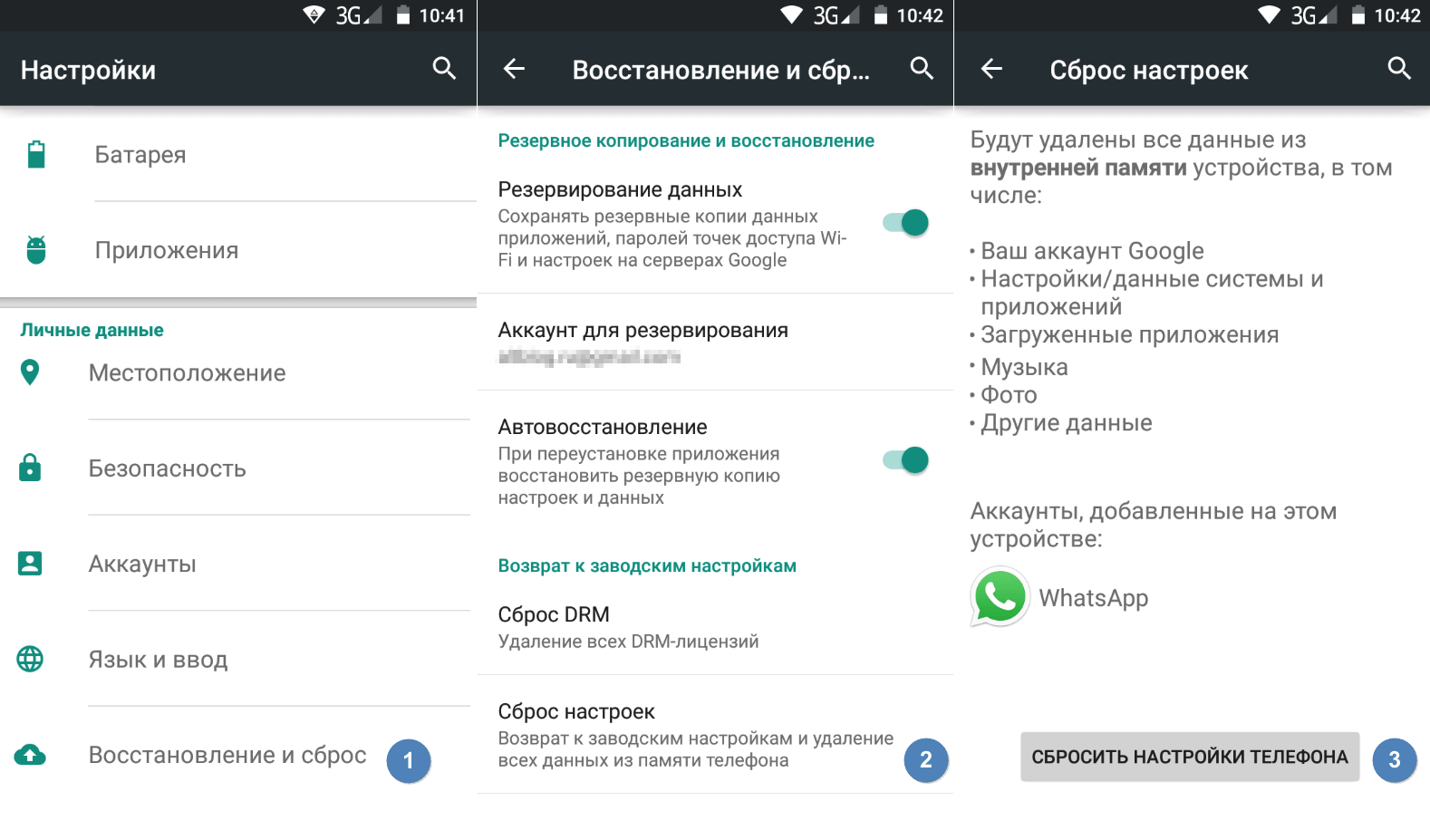
In the "Settings" menu, find the "Restore and reset" item, select "Reset phone settings" and enter the password if it was set earlier. You will be prompted to erase all data. Confirm this action and wait for the process to complete, after which you can use the backup storage to restore the previously saved information.
The whole procedure will take no more than a few minutes.
Reset with buttons through recovery mode
If the phone is frozen, the touchscreen is not working and it seems that the settings menu cannot be reached, do not lose hope. There is a solution: Android can be put into recovery mode using the buttons on the case.
Below is a list of commands that work on devices of some popular brands. If you don't see your phone brand in the list, just search Google for “master reset” and the device name. It's best to press the power button after you hold down the other buttons.
- Samsung: Volume Up, Home Button, Power.
- Google Nexus / Pixel: volume down, power.
- HTC: volume down, power. On some HTC models, you need to hold down the volume down after you release the power.
- Motorola Moto Z / Droid: volume down, power. On most Motorola devices, you need to hold down the volume down button and press (once) on the power.
- LG: volume down, power. When the LG logo appears, release the power and immediately press again. Hold the volume down button.
- Sony Xperia: volume down, power.
- Asus Transformer: volume down, power.
Don't be surprised that it is so difficult to get into recovery mode. This is not to confuse you. Manufacturers just want to prevent accidentally putting the smartphone into recovery mode, because in that case it would be very easy to erase all data from the device without wanting to.
So, first, turn off your phone. After that, press and hold the volume down button, then press the power button until it turns on again. The message "Start" should appear on the screen.
Once in recovery mode, use the volume buttons to select the desired command. It usually contains the words "wipe" or "delete". Sometimes - "perform factory reset". The exact wording depends on the manufacturer. To select a command, the on / off button is most often used as an analogue of the computer "Enter".
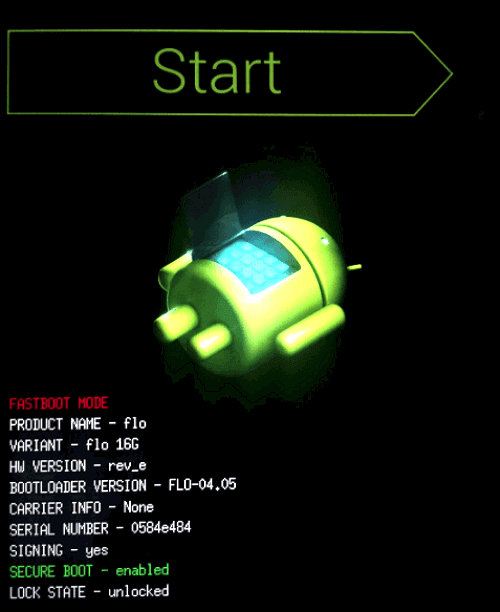
Now hold down the volume down button until "Recovery mode" appears.
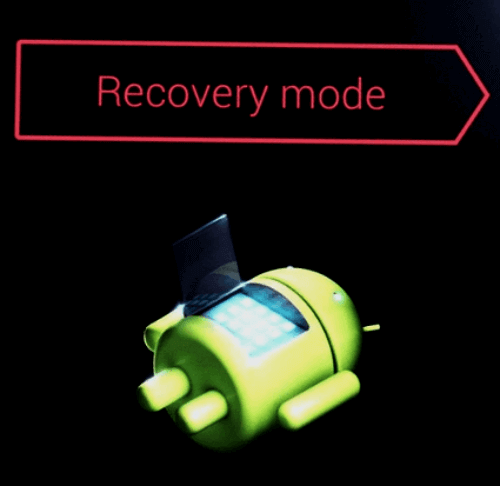
After that, press the power button to get into recovery mode. You will see the Android logo. When the phone is put into recovery mode, press the power button and once to increase the volume. Then release the power button.
Now press the volume down button until the menu appears on the screen.
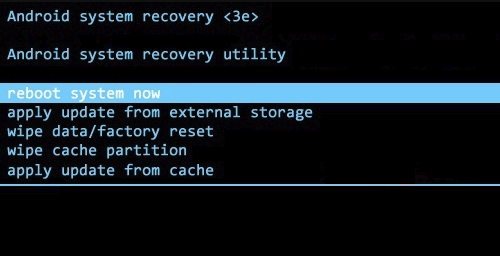
The options available may vary depending on the device model, but there are certain standards that are always there.
- reboot system now - will reboot the device normally.
- apply update from ADB - allows you to connect your phone to your computer via a USB cable and send commands to it using the Android SDK.
- wipe data / factory rest - will delete all data and return the phone to factory state.
- wipe cache partion - clears the cache partition. This is temporary system data related to the installation of applications, and you can delete it without losing any personal data. This can solve many problems.
Note: Starting with Android 7.1, Google has removed the last item. You can do the same by going to Settings → Storage and selecting Cached Data.
As you might guess, in this case you need to select the "Wipe data / Factory reset" item.
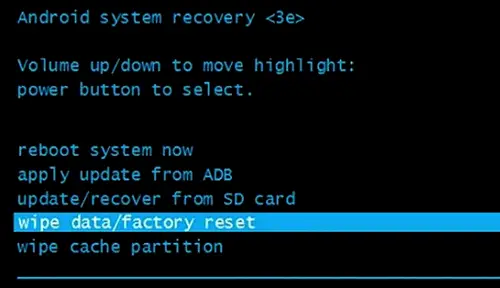
The system will ask if you really want to delete all data - select "Yes" using the volume buttons.

Now you need to select the "Reboot system now" item.
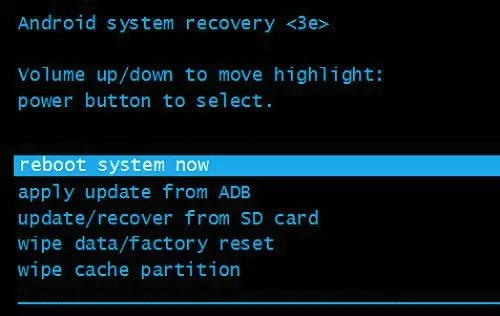
Android will then start factory reset. When everything is over and the system boots up, use the backup storage to restore data.
Factory reset protection
Factory Reset Protection (FRP) is enabled by default on every device running Android 5.0 Lollipop or later. This means that you will be required to enter your Google account username and password, even after a full factory reset. If you do not have this data, the phone will remain locked and you will not be able to access it.
This is done in order to reduce theft, as even a factory reset via the recovery menu will prevent a thief from accessing your data. It's also worth remembering that if you plan to delete all data from your phone before selling it to avoid FRP protection, be sure to go to Settings → Accounts and delete your Google account before performing a reset. If there is more than one account registered, make sure you delete all of them.
Data deletion illusion
When you do a factory reset, the idea is that everything should be completely deleted, but this is not entirely true. Android deletes the addresses of all your data from its memory, so it no longer knows where it is and cannot show it, but in fact it remains in flash memory. Therefore, someone can use special programs for recovering deleted files to get them back. Let's see how you can avoid this.
Encrypt the data
The first option is to encrypt the data. This functionality is already built into Android and requires you to enter a PIN or password each time you unlock the screen. Anyone who tries to recover data from your phone will need a special decryption key that they don't have.
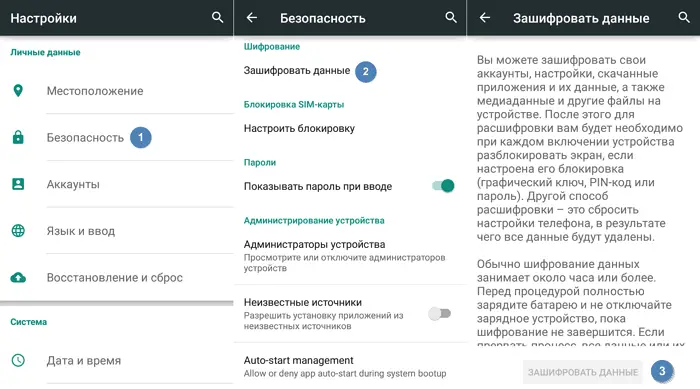
The exact path to this function may differ slightly, but it is usually found in the Settings → Security → Encrypt data menu. But on Samsung Galaxy, for example, you need to go to the following path "Settings → Lock screen and security → Encrypted data protection". There's also the option to encrypt the SD card, but if you're selling a phone, we recommend simply pulling it out instead.
If after the purchase, the phone already had Android 6.0 Marshmallow or higher installed, then it should be encrypted by default, and you can proceed to the next item. If you do not know which version of Android you have installed, then open the menu "Settings → About device → Information about software". Keep in mind that by default it will only be encrypted if Android 6.0 Marshmallow was installed out of the box.
Overwrite with unnecessary data
If you want to be absolutely sure, you can overwrite the encrypted data with unnecessary data and then perform a factory reset. Then it will be truly impossible to recover your old data. If you want to do this, then just download various "junk" to your phone until the storage is full - a few big videos should do the trick. Then do the reset again one more time.
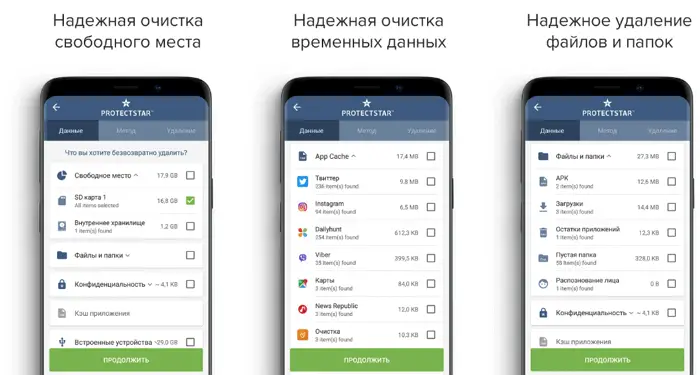
You can also do this using apps from the Google Play Store, such as iShredder 6 . It can fill free disk space with various "garbage", reliably delete the application cache or individual files and folders.